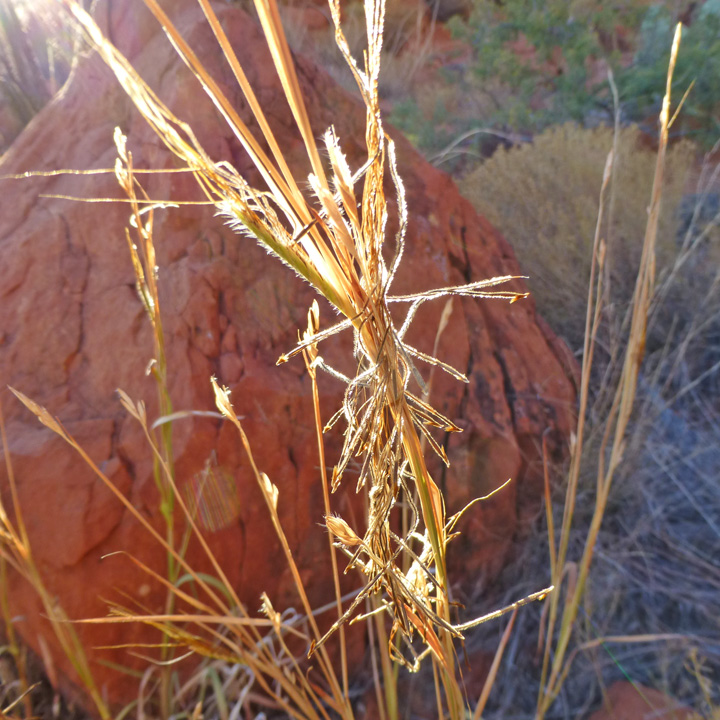|
Family: Poaceae |
Plants annual or perennial; cespitose. Culms 20-200 cm, simple or branched. Leaves sometimes aromatic and smelling of lemon oil or citronella; sheaths keeled, sometimes with a row of glandular depressions on the keel; ligules membranous, glabrous or ciliate. Inflorescences terminal and axillary; peduncles usually with 1 rame, sometimes with several in a digitate cluster; rames with 3-10 homogamous, unawned, sessile-pedicellate spikelet pairs on the lower 1/4-2/3 and heterogamous, awned, sessile-pedicellate spikelet pairs distally, axes slender, without a translucent median groove; disarticulation in the rames, beneath the sessile spikelets of the heterogamous spikelet pairs, sometimes also below their pedicellate spikelets. Homogamous spikelet units sterile or staminate; calluses poorly developed; glumes membranous, many-veined, keels winged above. Heterogamous spikelet units: sessile spikelets bisexual, terete; calluses 1.5-3 mm, sharp, antrorsely strigose, hairs golden brown; glumes coriaceous, pubescent, concealing the florets; lower glumes enclosing the upper glumes, obscurely 5-9-veined; upper glumes sulcate, 3-veined; lower florets sterile, reduced to a hyaline lemma; upper florets bisexual, lemmas with conspicuous, geniculate awns; awns 5-15 cm, with hairs. Caryopses lanceolate, sulcate on 1 side. Pedicels short, free of the rame axes, not grooved; pedicellate spikelets sterile or staminate, larger than the sessile spikelets; calluses long, glabrous, functioning as pedicels; glumes membranous, many-veined, keels winged above. x = 10, 11. Name from the Greek heteros, different, and pogon, beard, alluding to the difference between the calluses of the spikelets in the heterogamous pairs. |


